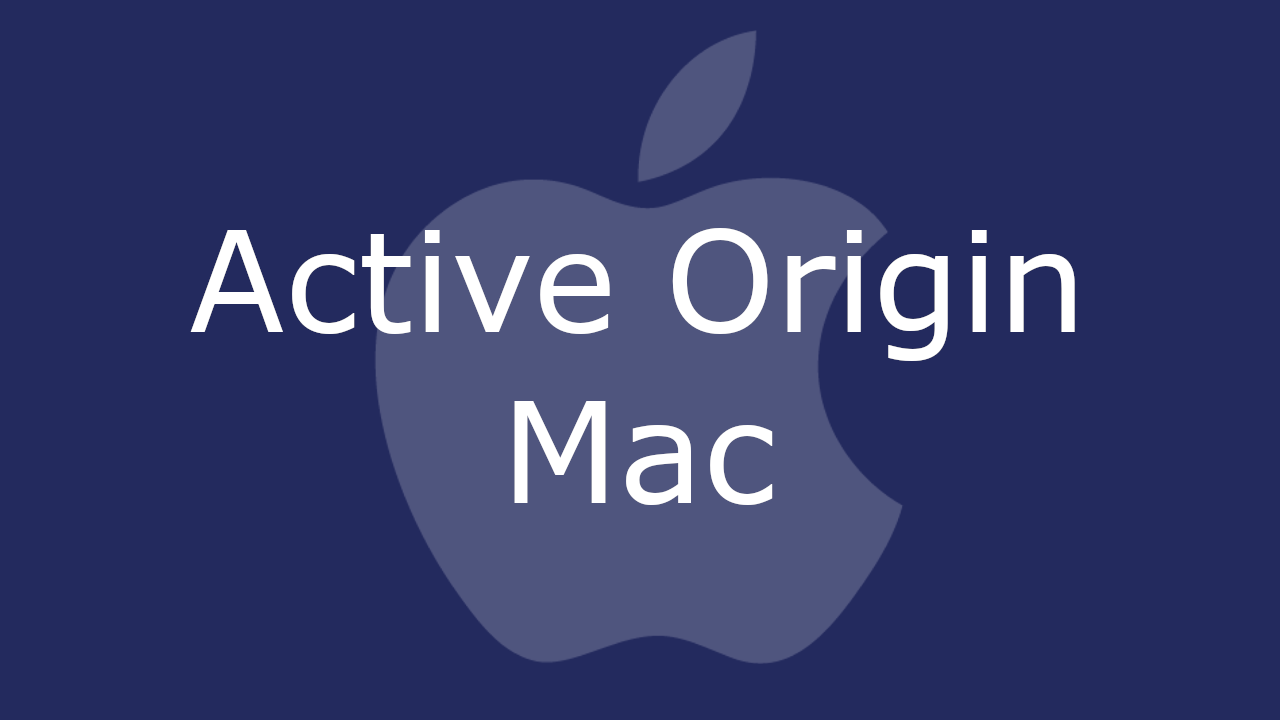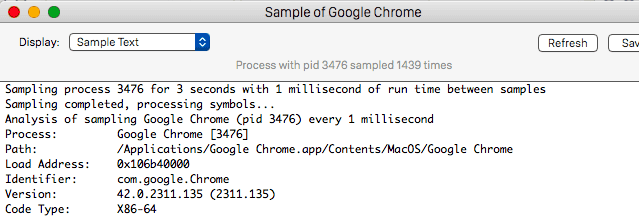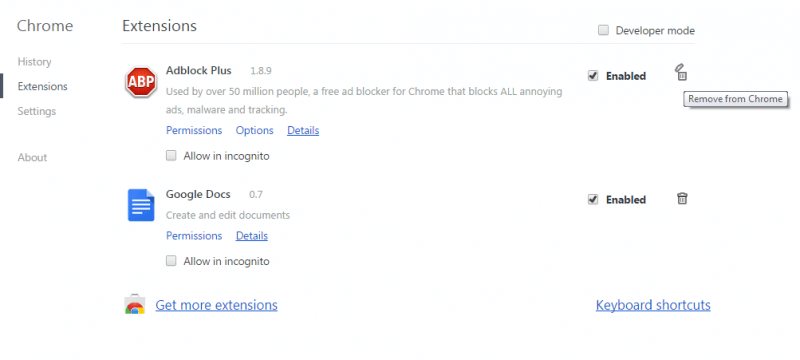Active Origin
Active Origin is a program compatible with Mac computers that is used to funnel traffic to specific websites and promote paid ads on the pages visited by the users. Users of Active Origin report that the program makes changes to the settings of browsers such as Safari, Chrome, Firefox and others and thus, call it a browser hijacker.

The Active Origin Mac app will display pop up ads and windows
Active Origin is an app mainly used to clutter the screen of Mac users with pay-per-click advertisements, pop-ups, banners and other promotional messages on the users’ screen and to automatically redirect their searches to pre-defined URLs. To execute its ad-generating and page-redirecting activities more effectively, the program normally installs its own search engine and changes the homepage address with the one of a sponsored website. This article explains how to uninstall all the changes imposed by this intrusive browser hijacker from any of the browsers that might have been affected. That’s why we suggest you to stay with us if you are looking for fast and detailed instructions on how to remove Active Origin.
Active Origin for Mac
Active Origin for Mac is a browser hijacker that updates the main web browser’s default search engine and homepage, and adds new components to it. Typically, Active Origin will make certain changes without obtaining permission from the user, and, due to this, it can easily be mistaken for a virus.
Fortunately, this program is not a virus and does not share the malicious characteristics of popular malware threats such as Worms, Trojans and Ransomware. By default, Active Origin is an online advertising software that is specialized in producing various pop-up ads, banner messages and online promotions on the screen of your computer. The program typically helps its developers to redirect you to sites that pay for their traffic. That’s why the search engine and the homepage the browser hijacker installs usually link to some predefined URLs and search results that connect directly to partnering sites.
What is Active Origin?
Active Origin is a piece of software designed to hijack Mac browser settings with the idea to redirect user traffic to sponsored URLs. Many users consider Active Origin as potentially unwanted program due to this behavior and seek ways to uninstall it in order to stop the auto-redirects.
When an application like Active Origin runs on the device, many people find it hard to use their browser normally. They typically find the auto-redirects to various sites as irritating and complain that they cannot uninstall or remove the search engine and the homepage components that cause these redirects effectively. The relentless stream of on-screen advertisements, pop-ups, banners and notifications that cannot be stopped by any means is another cause for browsing frustration. Oftentimes, these advertisements leave users no choice but to click on them in order to continue browsing the page they are on. However, security professionals warn that clicking on such random messages is not advisable as they may redirect you to sites infected with ransomware, Trojans, viruses and other malware.
The Active Origin app
The Active Origin app is a potentially unwanted program that can change Mac web browser configurations without being permitted to do so. The Active Origin app usually displays supported advertisements and redirects users to pages that pay for their online advertising.
Active Origin is generally not a malicious piece of software, but users who allow it to remain on their Mac device may risk unintentional exposure to various sketchy web materials, such as deceptive web links and fake advertisements. That’s why our recommendation with notion to security is to uninstall the browser hijacker either by using the instructions in the removal guide below, or by running a scan with professional removal tool.
SUMMARY:
| Name | Active Origin |
| Type | Browser Hijacker |
| Detection Tool |
Active Origin Removal
For a quick way to remove Active Origin try to do this inside your Mac browser:
- Open your Mac browser.
- Go to Preferences.
- Now navigate to the extensions sub-menu.
- Look for any unfamiliar entries, including Active Origin.
- Remove Active Origin from your Mac as well as any other suspicious-looking items by clicking on the trash bin icon.
If this does not help then continue reading this article for more detailed instructions on how to get rid of Active Origin!
![]()
The first thing you need to do is to Quit Safari (if it is opened). If you have trouble closing it normally, you may need to Force Quit Safari:
You can choose the Apple menu and click on Force Quit.
Alternatively, you can simultaneously press ⌘ (the Command key situated next to the space bar), Option (the key right next to it) and Escape (the key located at the upper left corner of your keyboard).
If you have done it right a dialog box titled Force Quit Applications will open up.
In this new dialog window select Safari, then press the Force Quit button, then confirm with Force Quit again.
Close the dialog box/window.
![]()
WARNING! READ CAREFULLY BEFORE PROCEEDING!
Start Activity Monitor by opening up Finder, then proceed to ![]()
Once there, look at all the processes: if you believe any of them are hijacking your results, or are part of the problem, highlight the process with your mouse, then click the “i” button at the top. This will open up the following box:

Now click on Sample at the bottom:

Do this for all processes you believe are part of the threat, and run any suspicious files in our online virus scanner, then delete the malicious files:

![]()
The next step is to safely launch Safari again. Press and hold the Shift key while relaunching Safari. This will prevent Safari’s previously opened pages from loading again. Once Safari is opened up, you can release the Shift key.
On the off chance that you are still having trouble with scripts interrupting the closing of unwanted pages in Safari, you may need to take some additional measures.
First, Force Quit Safari again.
Now if you are using a Wi-Fi connection turn it off by selecting Wi-Fi off in you Mac’s Menu. If you are using a cable internet (Ethernet connection), disconnect the Ethernet cable.
![]()
Re-Launch Safari but don’t forget to press and hold the Shift button while doing it, so no previous pages can be opened up. Now, Click on Preferences in the Safari menu,

and then again on the Extensions tab,

Select and Uninstall any extensions that you don’t recognize by clicking on the Uninstall button. If you are not sure and don’t want to take any risks you can safely uninstall all extensions, none are required for normal system operation.
![]()
The threat has likely infected all of your browsers. The instructions below need to be applied for all browsers you are using.
Again select Preferences in the Safari Menu, but this time click on the Privacy tab,

Now click on Remove All Website Data, confirm with Remove Now. Keep in mind that after you do this all stored website data will be deleted. You will need to sign-in again for all websites that require any form of authentication.
Still in the Preferences menu, hit the General tab

Check if your Homepage is the one you have selected, if not change it to whatever you prefer.

Select the History menu this time, and click on Clear History. This way you will prevent accidentally opening a problematic web page again.
![]() How to Remove Active Origin From Firefox in OSX:
How to Remove Active Origin From Firefox in OSX:
Open Firefox, click on ![]() (top right) ——-> Add-ons. Hit Extensions next.
(top right) ——-> Add-ons. Hit Extensions next.

The problem should be lurking somewhere around here – Remove it. Then Refresh Your Firefox Settings.
![]() How to Remove Active Origin From Chrome in OSX:
How to Remove Active Origin From Chrome in OSX:
Start Chrome, click ![]() —–>More Tools —–> Extensions. There, find the malware and select
—–>More Tools —–> Extensions. There, find the malware and select ![]() .
.

Click ![]() again, and proceed to Settings —> Search, the fourth tab, select Manage Search Engines. Delete everything but the search engines you normally use. After that Reset Your Chrome Settings.
again, and proceed to Settings —> Search, the fourth tab, select Manage Search Engines. Delete everything but the search engines you normally use. After that Reset Your Chrome Settings.
If the guide doesn’t help, download the anti-virus program we recommended or try our free online virus scanner. Also, you can always ask us in the comments for help!

Leave a Comment